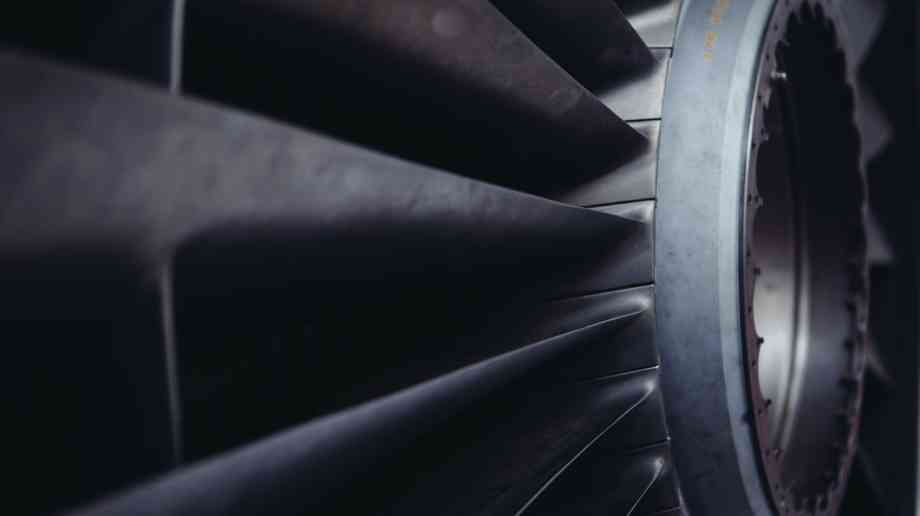Sue Robb of 4Children talks to Julie Laughton and Alison Britton from the Department for Education about the role of childminders in delivering the 30 hours free entitlement.

More sustainable building practices
Russell Beattie, chief executive of the Federation of Environmental Trade Associations (FETA), reviews the current state of the building services sector, focusing on some of the ways in which the heating, ventilation and air conditioning industry is contributing in the push towards energy efficiency
Last year we witnessed a tumultuous 12 months across the political landscape and we seem no closer to resuming anything approaching normality. The Brexit negotiations filled the headlines, and we endured an unexpected election call, bringing even less clarity to the situation. Along with many of our fellow organisations, we have continued to work to ensure that our sector is heard as the myriad details of transitioning out of the EU are worked through.
Two of last year’s most popular television programmes, Planet Earth II and Blue Planet II, both shown on the BBC and narrated by the legendary Sir David Attenborough, showed us elements of the natural world that fascinated, educated and alerted us in equal measure. Both programmes issued some severe warnings about the state of our planet, particularly related to climate change. The damage caused by plastics has also been brought to public prominence and we can expect greater awareness of this to be reflected in consumer attitudes. The building industry is in a prime position to be one of the standard bearers in promoting greener technology, benefiting the environment for generations to come and this remains at the forefront of our thinking at FETA.
Minimum Energy Performance Standard
Buildings must of course fulfil their primary purpose, providing shelter from the elements, but they must also provide a safe and healthy environment in which occupants can live, work and operate. Soon there will be a new requirement to adhere to, as we attempt to increase the role buildings play in protecting the environment.
After the Minimum Energy Performance Standard (MEPS) takes effect on 1 April 2018, all commercial leases will need to achieve a minimum Energy Performance Certificate (EPC) rating of ‘E’ before they can be let to new occupiers or renew an existing tenancy. The government estimates that around 18 per cent of current buildings in the UK are currently failing to meet the minimum rating of E for the EPC and hence there is significant pressure on affected landlords and building owners to make the necessary changes.
Failing to comply with the upcoming standard will mean landlords no longer being able to let a property until the requirements are met. It could also result in a significant fine. For those less than three months in breach of the MEES Regulations, fines will be equivalent to 10 per cent of the property’s rateable value, subject to a minimum penalty of £5,000, and up to a maximum of £50,000. After three months, the penalty rises to 20 per cent of the rateable value, with a minimum penalty of £10,000 and a maximum of £150,000.
Building controls
In buildings of any age, function and standard, significant reductions of energy consumption and CO2 emissions can be achieved relatively easily. Individual regulation of room temperature using window contacts, daylight-dependent lighting and building automation systems adapted to customer requirements can all contribute towards conserving energy. The use of building automation systems will not only allow for an energy efficient building, but will also save on the overall building operating costs using existing energy resources. It will lower CO2 emissions and will enable the owner/operator to work towards the best possible energy efficiency standards.
Innovative building energy management systems influence the energy efficiency of a building in many areas. They can ensure precise control of temperature, humidity and air quality in the room and optimal generation and distribution of heating and cooling. Once automation systems are in place, monitoring and management facilities can be used to calculate and display the total energy consumption within the building, allowing users to analyse energy usage and plan improvement measures.
Modern heating systems
Another clear move towards more sustainable building practices was announced by the government in October, laying out plans to phase out the use of heating oil for hot water and building heating (domestic and non-domestic) during the 2020s. The details of how this is to be achieved have yet to be determined, but this declaration is seen as a path to eventual regulation. Focus initially will be towards new build but will then be directed to existing building stock using heating oil. FETA regards this as a clear signal of intent toward ‘cleaner heating’ systems and heat pumps of all genres can contribute significantly to this as low emission technologies.
Most heat pumps already have the ability to be switched on or off by external means, such as by an electricity grid during high demand where the spot price (that paid by the electricity distributor) is very high. In the future, we can expect to see devices that can monitor the reaction of the building they are heating to the input of heat and calculate the likely degradation profile should the device be disabled for a time due to a high electricity price or high carbon dioxide emission rate.
Heat pumps provide real potential for harnessing the benefits of ever-expanding and developing IT capabilities. The only limit is our ability to understand and practically apply such benefits with special consideration for commercial viability.
Refrigeration and air conditioning
FETA has set up a new A2L refrigerants working group and has released a guidance note entitled ‘An introduction to A2L refrigerants and their use in Refrigeration, Air Conditioning and Heat Pump applications’.
Introduced in 2015, the F Gas Regulation requires the introduction of refrigerants with significantly lower Global Warming Potential (GWP) and will ban new equipment which uses hydrofluorocarbon (HFC) refrigerants with a GWP of over 2,500 by the year 2020. As a result, new refrigerants are being developed by manufacturers; in many cases these are pure, or blended, HFOs (Hydro Fluoro Olefins). Whilst having much lower GWP rates, some of these new refrigerants do exhibit flammability characteristics (albeit in the Lower or ‘mild’ classes). To recognise this, and their difference from higher flammability refrigerants such as hydrocarbons (classified as A3), a new A2L classification has been introduced by ASHRAE.
The new working group offers clear guidance on A2L refrigerants and the implications of their use, sharing information and communicating changes and updates as soon as they occur. It is also working with standards bodies to ensure any new standards being developed reflect the need for wider usage and knowledge of such products. Many FETA members are already involved in this process.
Ductwork
A property’s duct system is a complex network of tubes in the walls, floors and ceilings; it carries the air, hot and cold, around the building. Ducts are made of sheet metal, fibreglass, or other materials and ductwork air tightness is the fundamental ductwork property that impacts the uncontrolled leakage of air through duct leaks. Ducts that leak heated air into unheated spaces will increase a building’s heating and cooling bills but this can be reduced by professional sealing and insulating practices.
Poor duct air tightness can be caused by a variety of factors, including; inadequate or missing sealing media, worn tapes, poor workmanship around duct take-offs and fittings, ill-fitted components and physical damage.
As well as the energy saving benefits, the quality of a building’s indoor environment is important to consider too. Reduced leakage helps direct the airflow to go exactly where it is intended, ensuring a good indoor environment. A duct system that is not air tight will allow dust and dirt to enter and circulate throughout the building. The particles could include insulation fibres, pet dander, waste from insects and rodents, or pollen. Ducts also provide comfortable habitats for pests. Both insects and mice can crawl through small cracks and gaps.
A leading light
It is likely that 2018 will see more of the same in terms of high level policy debate and, as ever, it will be the expertise and commitment of our active members which will be key to delivering optimal outputs for our sector.
When addressed individually, many building systems and components have some sort of impact on efficiency but grouped together, heating, ventilation and air conditioning can account for a significant proportion of an organisation’s overall energy consumption. By analysing these elements, understanding how they fit into the ecosystem of the building and identifying key legislative requirements and trends, the building services sector can make a real statement on energy efficiency, helping to establish the UK as a leading light in the movement towards more sustainable buildings.
Company Focus
The Isuzu D-Max is a rugged workhorse that can fulfil a myriad of purposes as both a business and personal vehicle. Consequently, the D-Max is a particularly popular choice when it comes to farming, construction, and trade industries. Uncompromising in nature, the D-Max strives to be the ideal companion for many business needs.
Event Diary
UKREiiF has quickly become a must-attend in the industry calendar for Government departments and local authorities.
The multi-award-winning UK Construction Week (UKCW), is the UK’s biggest trade event for the built environment that connects the whole supply chain to be the catalyst for growth and positive change in the industry.
Supplier Profiles
Geo Energy
At GeoEnergy Design, we're on a mission to disrupt the traditional way heating and cooling ha
Latest Features
Professor Harith Alani, director of the Knowledge Management Institute at the Open University explains how AI can be used for good and bad.
Alex Lawrence, head of health & social care, techUK sets out techUK’s Five Point Plan for CareTech.












